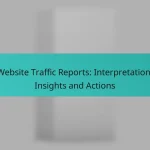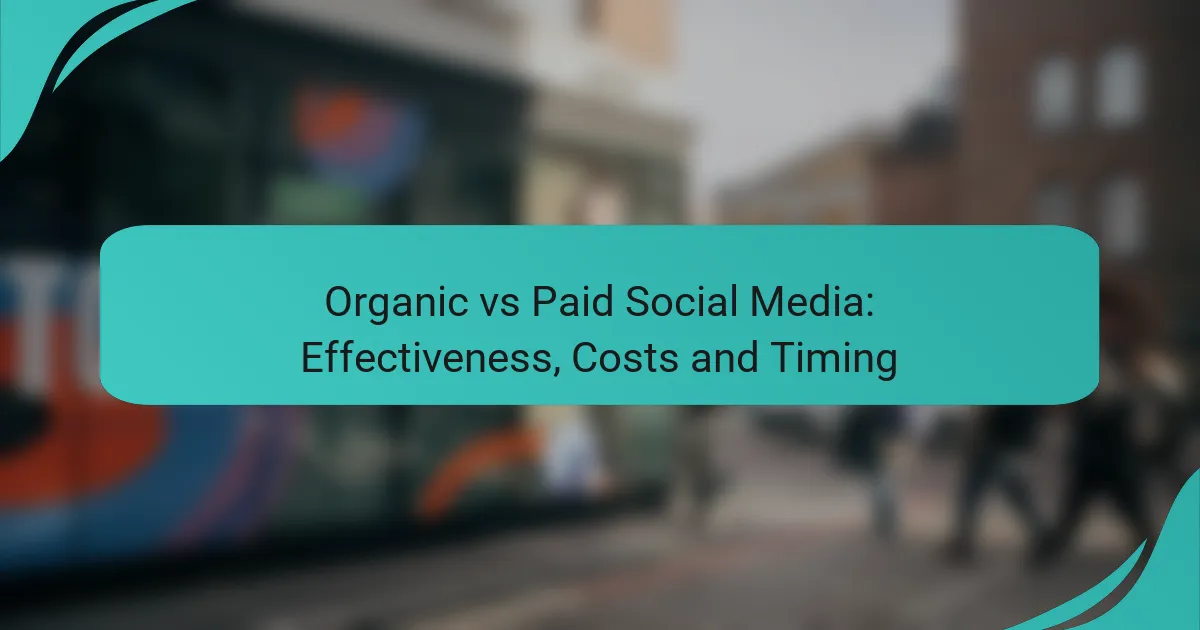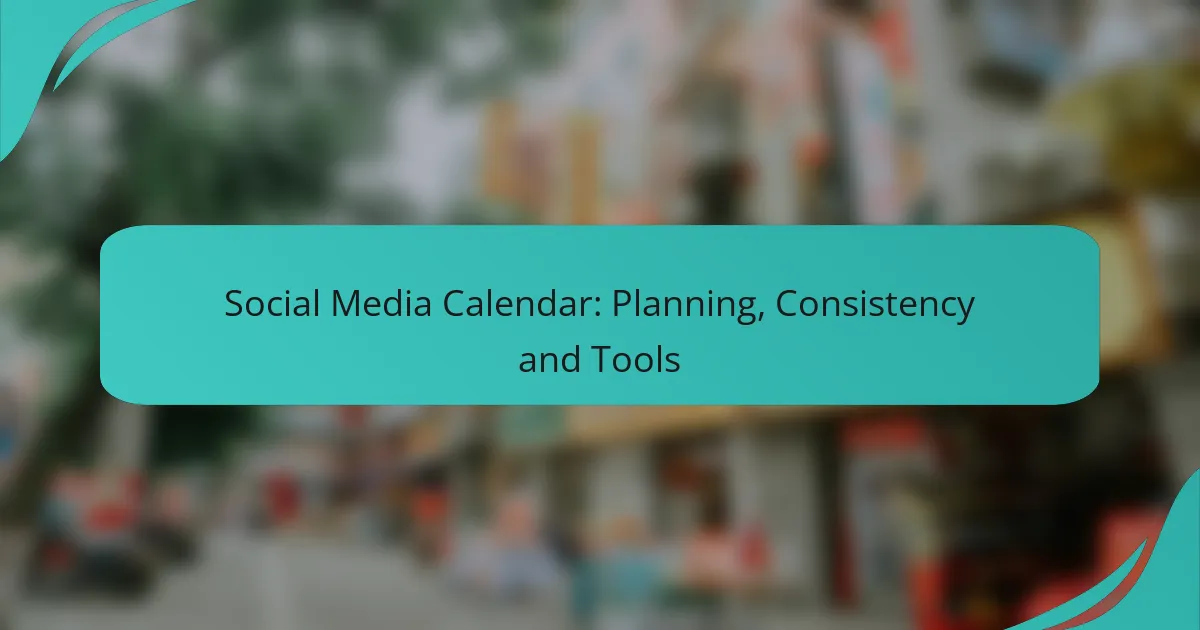In the UK, marketers face a choice between organic and paid social media strategies, each offering unique benefits and challenges. Organic social media emphasizes building long-term relationships and engagement, while paid social media provides immediate visibility and results. Understanding the differences in costs and timing is crucial for developing effective marketing campaigns that align with business goals.
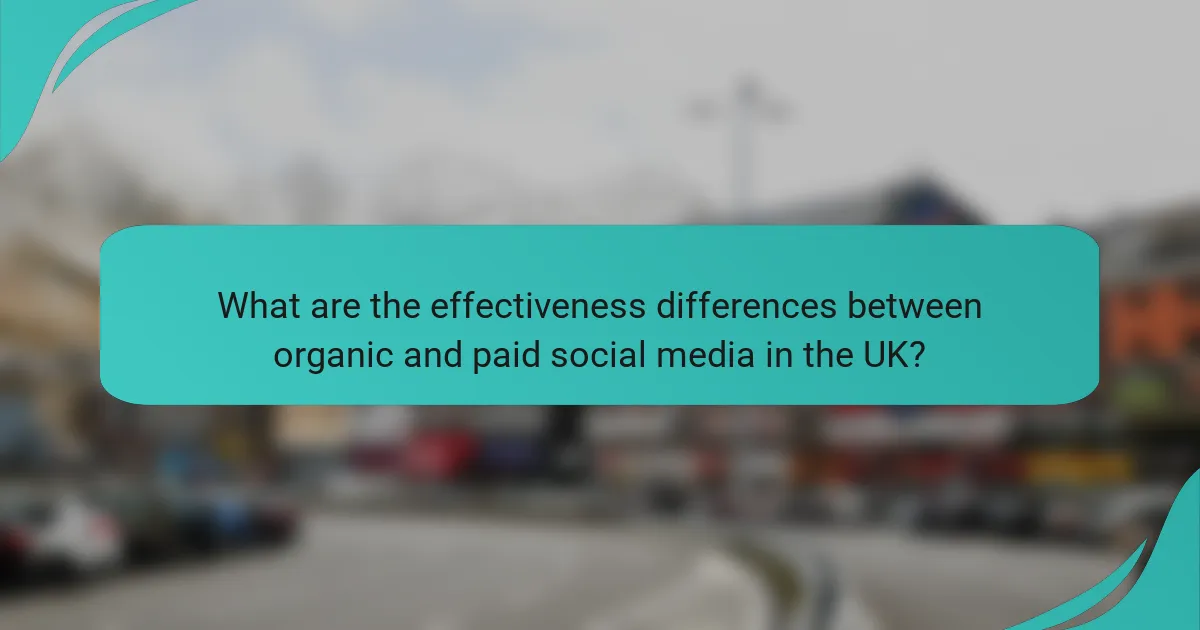
What are the effectiveness differences between organic and paid social media in the UK?
In the UK, organic social media focuses on building long-term relationships and engagement, while paid social media aims for immediate visibility and results. Each approach has distinct advantages and limitations that marketers should consider when planning their strategies.
Organic social media builds long-term engagement
Organic social media fosters genuine connections with audiences over time. By consistently sharing valuable content, brands can cultivate trust and loyalty, leading to higher engagement rates and community growth.
For example, a brand that regularly interacts with its followers through comments and shares can develop a dedicated community. This approach often results in organic word-of-mouth referrals, which can be more impactful than paid promotions.
Paid social media delivers immediate results
Paid social media campaigns can generate quick visibility and traffic. By investing in ads, brands can reach a larger audience almost instantly, making it an effective strategy for time-sensitive promotions or product launches.
For instance, a UK retailer launching a new product can use paid ads to target specific audiences, driving immediate sales. This approach often results in measurable outcomes, such as increased website visits or conversions, within days of the campaign launch.
Organic reach is limited by algorithm changes
Organic reach on social media platforms is often restricted by algorithm changes, which can affect how many followers see a brand’s posts. These algorithms prioritize content based on user engagement, meaning that brands must continually adapt their strategies to maintain visibility.
For example, a brand that previously enjoyed high organic reach may find its posts seen by fewer followers after an algorithm update. This unpredictability can make it challenging to rely solely on organic methods for consistent audience engagement.
Paid ads target specific demographics
Paid social media allows brands to target specific demographics, interests, and behaviors, enhancing the effectiveness of their campaigns. This precision enables marketers to reach the most relevant audiences, increasing the likelihood of conversions.
In the UK, platforms like Facebook and Instagram offer detailed targeting options, such as age, location, and interests. A brand can create tailored ads for different segments, ensuring that the right message reaches the right people at the right time.
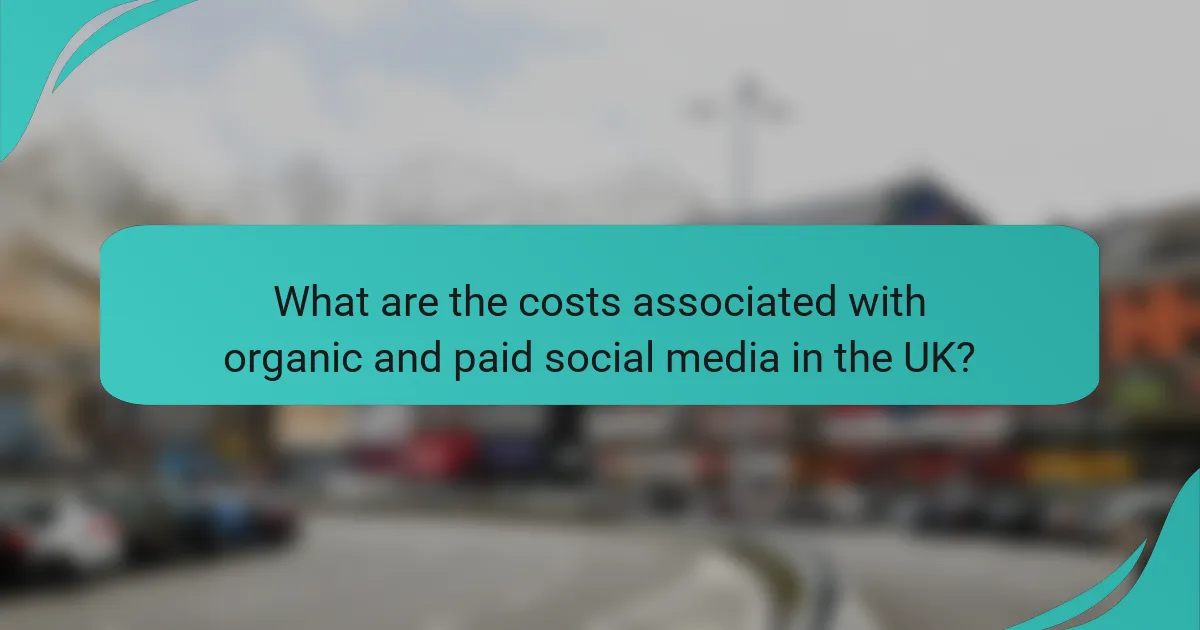
What are the costs associated with organic and paid social media in the UK?
The costs associated with organic and paid social media in the UK vary significantly. Organic social media primarily requires time and content creation, while paid social media incurs direct financial costs for advertising and management.
Organic social media requires time and content investment
Investing in organic social media means dedicating time to create and share engaging content without direct monetary costs. This approach often involves developing a content calendar, crafting posts, and interacting with followers, which can take several hours each week.
Quality content is crucial for organic reach, so brands should focus on producing valuable posts that resonate with their audience. While this method can be cost-effective, it may take time to see significant engagement and growth in followers.
Paid social media involves ad spend and management fees
Paid social media requires a budget for advertising, which can range from small amounts for local campaigns to larger sums for extensive national reach. In the UK, businesses might spend anywhere from £50 to several thousand pounds per month, depending on their goals and target audience.
Additionally, many companies opt for management services, which can add to the overall cost. Hiring a social media manager or agency can help optimize campaigns but typically incurs a monthly fee or a percentage of the ad spend.
Cost-per-click varies by platform
The cost-per-click (CPC) for paid social media ads can differ widely between platforms like Facebook, Instagram, and LinkedIn. Generally, CPC on Facebook may range from £0.50 to £2.00, while LinkedIn can be significantly higher, often exceeding £5.00 per click due to its professional audience.
Understanding the CPC for each platform is essential for budgeting effectively. Brands should analyze their target demographics and choose platforms that align with their marketing goals to maximize return on investment.
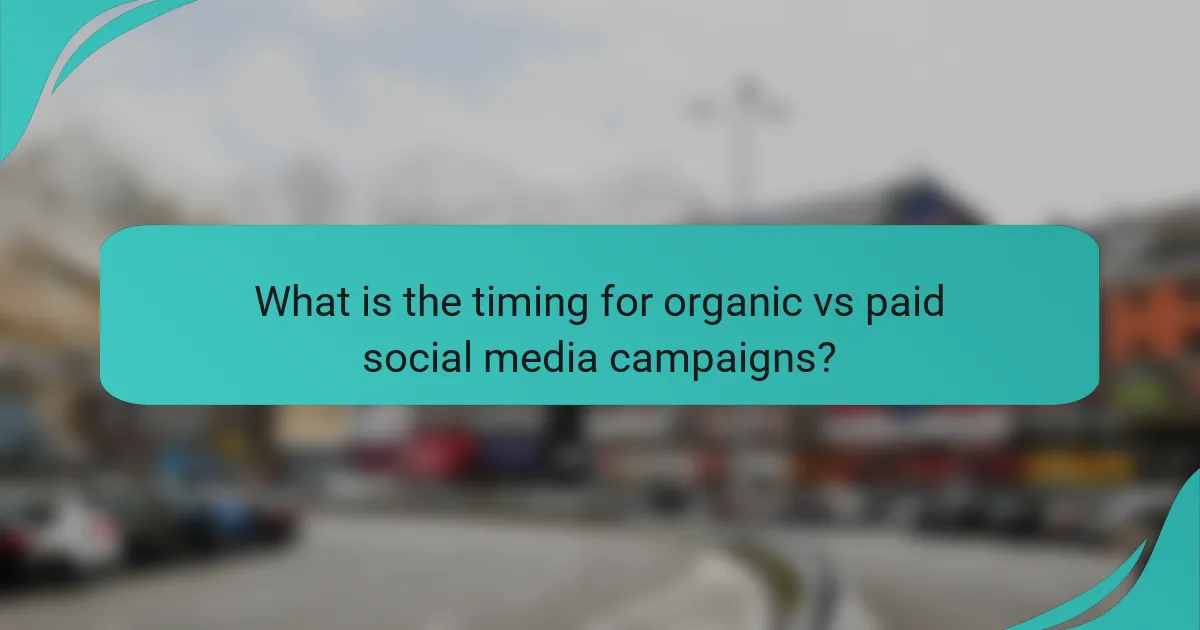
What is the timing for organic vs paid social media campaigns?
The timing for organic and paid social media campaigns varies significantly. Organic campaigns typically require more time to gain traction, while paid campaigns can be initiated immediately, delivering results almost instantly.
Organic campaigns take longer to build momentum
Organic social media campaigns rely on creating valuable content and engaging with audiences over time. This gradual approach often leads to a loyal following but can take weeks or even months to see substantial engagement. Consistency in posting and interaction is crucial for building momentum.
For example, a brand might post regularly for several months before noticing a significant increase in followers or engagement rates. Patience is essential, as organic growth is often a slow but sustainable process.
Paid campaigns can be launched instantly
Paid social media campaigns can be set up and launched within a matter of hours. Advertisers can create targeted ads and reach specific demographics immediately, allowing for quick feedback and adjustments. This instant access to audiences can be particularly beneficial for time-sensitive promotions or events.
For instance, a company can run a paid ad campaign for a product launch and start seeing clicks and conversions within the same day. This immediacy can provide valuable insights into audience preferences and behaviors.
Timing affects audience engagement
The timing of both organic and paid campaigns can significantly influence audience engagement. For organic posts, understanding when your audience is most active can enhance visibility and interaction. Tools like social media analytics can help identify peak times for posting.
In contrast, paid campaigns allow for flexible scheduling, enabling advertisers to run ads during optimal engagement periods. Testing different times and days can help maximize reach and effectiveness, ensuring that the right message reaches the right audience at the right time.

How do you choose between organic and paid social media strategies?
Choosing between organic and paid social media strategies depends on your budget, resources, and marketing goals. Organic strategies build long-term engagement and brand loyalty, while paid strategies offer immediate visibility and targeted reach.
Assess your budget and resources
Your budget is a critical factor in deciding between organic and paid social media. Organic strategies typically require more time and effort, while paid strategies involve direct financial investment. Consider allocating a portion of your marketing budget to paid ads if you need quick results.
For example, small businesses might spend anywhere from a few hundred to several thousand dollars monthly on paid ads, depending on their goals. Assessing your available resources, including staff and tools, can help determine the feasibility of each approach.
Define your target audience and goals
Clearly defining your target audience and marketing goals is essential for selecting the right strategy. Organic social media works well for building community and engaging with existing customers, while paid social media excels at reaching new audiences quickly.
Identify your primary objectives, such as brand awareness, lead generation, or sales conversion. This clarity will guide your choice, as organic strategies may take longer to yield results, whereas paid options can deliver immediate traffic and engagement.
Evaluate the competition in your niche
Understanding your competition’s social media strategies can inform your decision between organic and paid approaches. Analyze how competitors engage their audience and whether they rely more on organic content or paid advertisements.
If your competitors are heavily investing in paid ads, you may need to consider a similar approach to remain competitive. Conversely, if they focus on organic growth, you might find opportunities to differentiate your brand through unique content and community engagement.
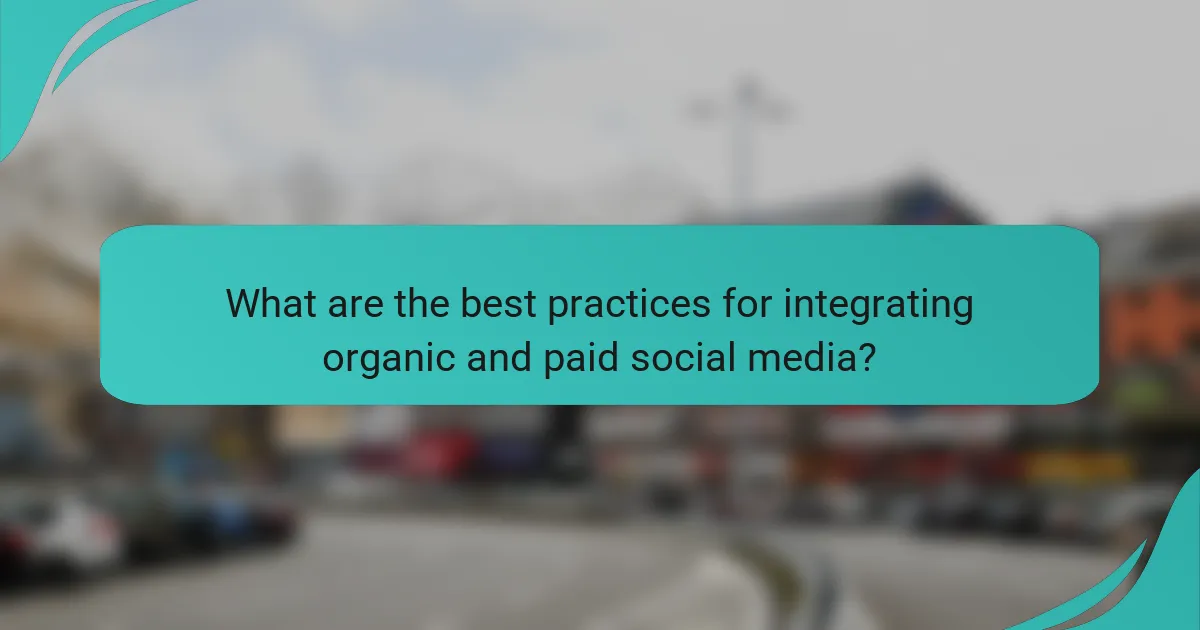
What are the best practices for integrating organic and paid social media?
Integrating organic and paid social media effectively can enhance brand visibility and engagement. Best practices include leveraging organic content to bolster paid campaigns, ensuring consistent messaging, and analyzing performance metrics to refine strategies.
Use organic content to support paid campaigns
Organic content can be a powerful asset for paid social media campaigns. By utilizing high-performing organic posts as part of your paid strategy, you can increase the likelihood of engagement and conversions. This approach not only saves costs but also builds credibility with your audience.
Consider promoting posts that have already shown strong engagement organically. For instance, if a particular post about a product or service received significant likes and shares, boosting it can amplify its reach. This method can result in a more efficient use of your advertising budget.
Additionally, ensure that the messaging in your organic and paid content aligns. Consistency helps reinforce brand identity and can lead to higher trust among your audience. Avoid using overly promotional language in organic posts, as this can detract from their authenticity and effectiveness.



